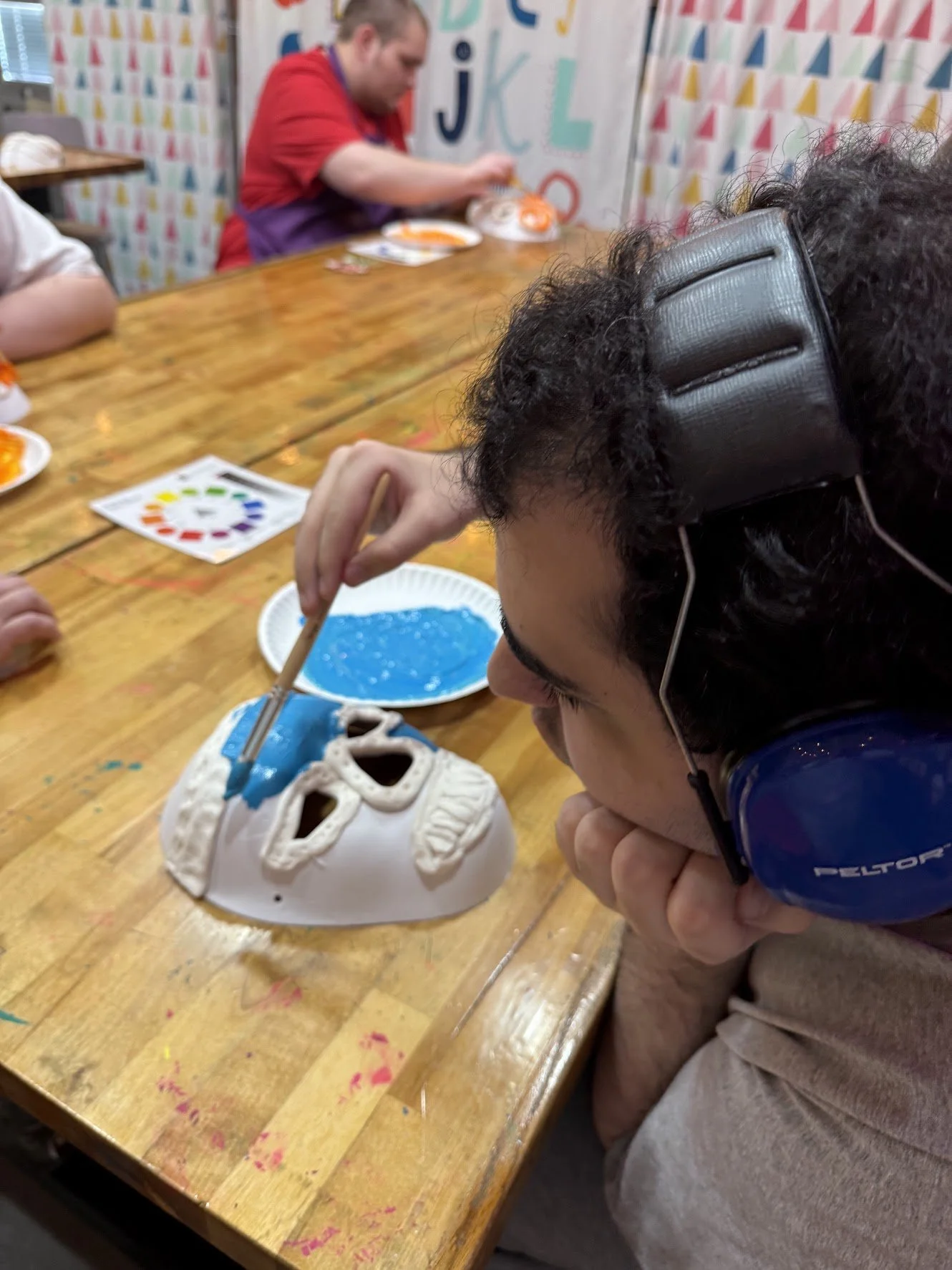autism & special needs, adapted.
a new art world
Art, Adapted., works to fight the perception that special-needs students can’t be creative or expressive with their art.
adapted.
Art, Adapted., works to debunk the perception that visual arts standards-based curriculum will be too difficult for your special-needs students.
With the right supports and Adapted curriculum, special-needs students can express creativity and thrive.
Adapted Art encourages expressive communication and independence through simple one and two step instruction and choice, depending on grade-level and developmental ability.
empower
Students to participate successfully alongside their gen-ed classmates using adapted curriculum.
Art, Adapted. curriculum is designed to help art teachers rise above the expectation that it will be too difficult or take too much time to adapt standards-based art projects to meet the needs of your special students.
the why
WHY should you incorporate Adapted Art projects and procedures with your Autistic students?
Special-needs students benefit greatly from participating in a Gen-ED art class and from learning with their peers.
Gen-ED art students will gain so much from the friendships they develop with special-needs students.
Some BE students are on the Autism Spectrum and have difficulty with transitions. Removing these students results in more behavioral issues. The disruption of the schedule for a student on the spectrum may cause serious behaviors.
inclusion
Art, Adapted. works to debunk the perception that visual arts standards-based curriculum will be too difficult for your special-needs students. With Adapted curriculum, special-needs students can participate successfully alongside their gen-ed classmates.
Communication is a ‘foundational priority’ for education. Regardless of the severity of disability, most students have the means to communicate.
The visual arts teacher should have supports in place to help with communication and collaborate with the Speech and Language Pathologist to help facilitate the process. The goal is to have students ‘express their needs, desires, questions, and comments about their lives and their world.’ (Kleinert, et al., 2013)
expression
prompts
COMMUNICATION PROMPTS
LEAST TO MOST PROMPT LEVELS
(WAIT 3-5 SECONDS BEFORE MOVING TO NEXT PROMPT)
I = INDEPENDENT: After you give a direction or an expectation to your student, they will be able to complete the task with no further prompts.
G= GESTURE/VISUAL: The teacher points to or motions to the student to communicate, no physical contact is made. *NO VERBAL
M= MODEL: The teacher demonstrates step-by-step instruction or shows a completed model of what the student is supposed to complete. *NO VERBAL
V= VERBAL: The teacher provides verbal information about the project, verbal instructions about the project, or responds to the questions.
PP= PARTIAL PHYSICAL: The teacher touches the student (arm, hand, elbow) to help assist with the creation of art. PP is less physical involvement than hand-over-hand guidance.
FP= FULL PHYSICAL: The teacher provides physical contact with the student to help direct the child to create art and complete the task. *NO VERBAL
HOH= HAND-OVER-HAND: The teacher touches the student (arm, hand, elbow) to help guide the actions by placing their hands over the hands of the student.
adapted art visuals
Art, Adapted., encourages expressive communication and independence through simple one and two step instruction and choice, depending on grade-level and developmental ability.
To help your special student with active communication and choice in their art, Art, Adapted., uses an innovative project specific visual art modeling system to give students, project-based choice. The project-based contour line visual examples will also help inspire your Gen-ED students in their art.
To achieve the Visual Arts standard for Responding (critique of artwork etc.) which is the use of expressive language to critique art, Art. Adapted., uses multimodal communication for expression. Students may communicate and use expressive language verbally, using hand signals, devices or visuals.
To achieve the Visual Arts standards for Presenting (presenting artwork, describing artwork), which is using expressive language, Art, Adapted., students communicate expressive language verbally, using hand signals, clapping, or visuals.
A high-quality arts education empowers students to take artistic risks and supports the social emotional and learning needs of all students, and how the arts contribute to their communities and cultures around the world.
As art students respond to great artists and works of art, they develop the ability to analyze artworks in terms of their formal qualities, historic style, social context, and artistic intent.
The practice of responding to works of art builds perceptive acuity and aesthetic sensitivity. A rigorous progression of learning and engagement with the arts throughout Pre-K–12 education is the foundation for a rich, lifelong relationship with the arts.

























